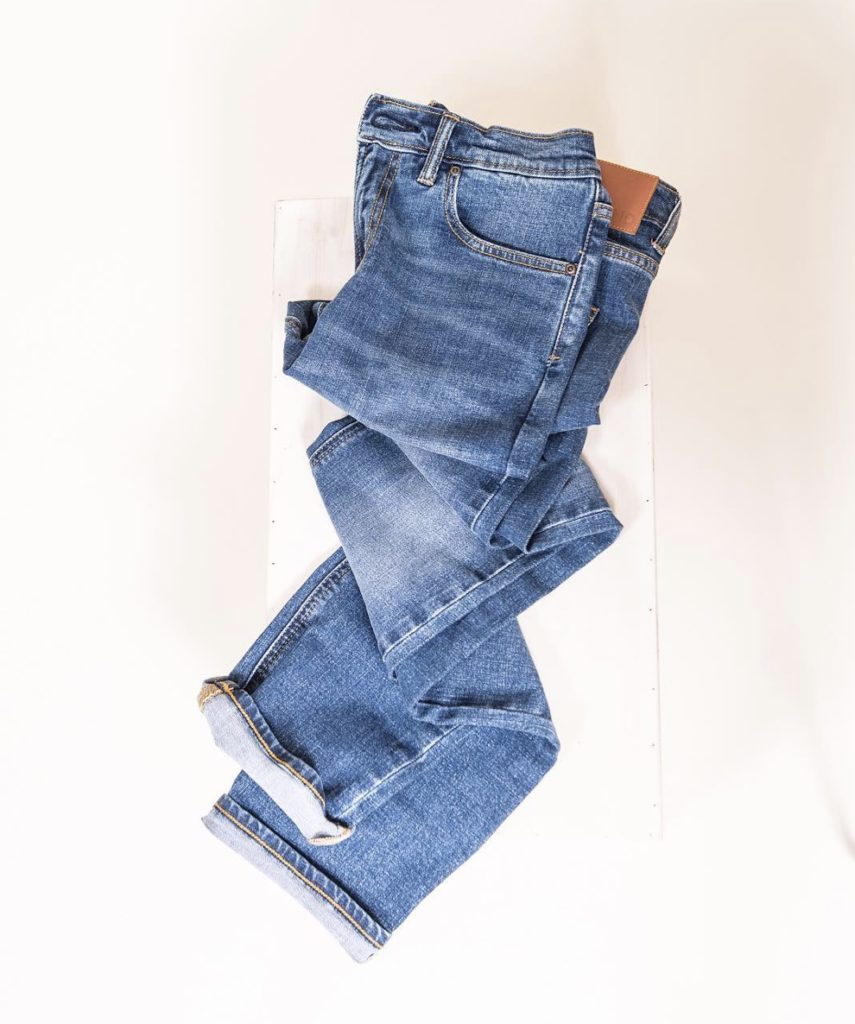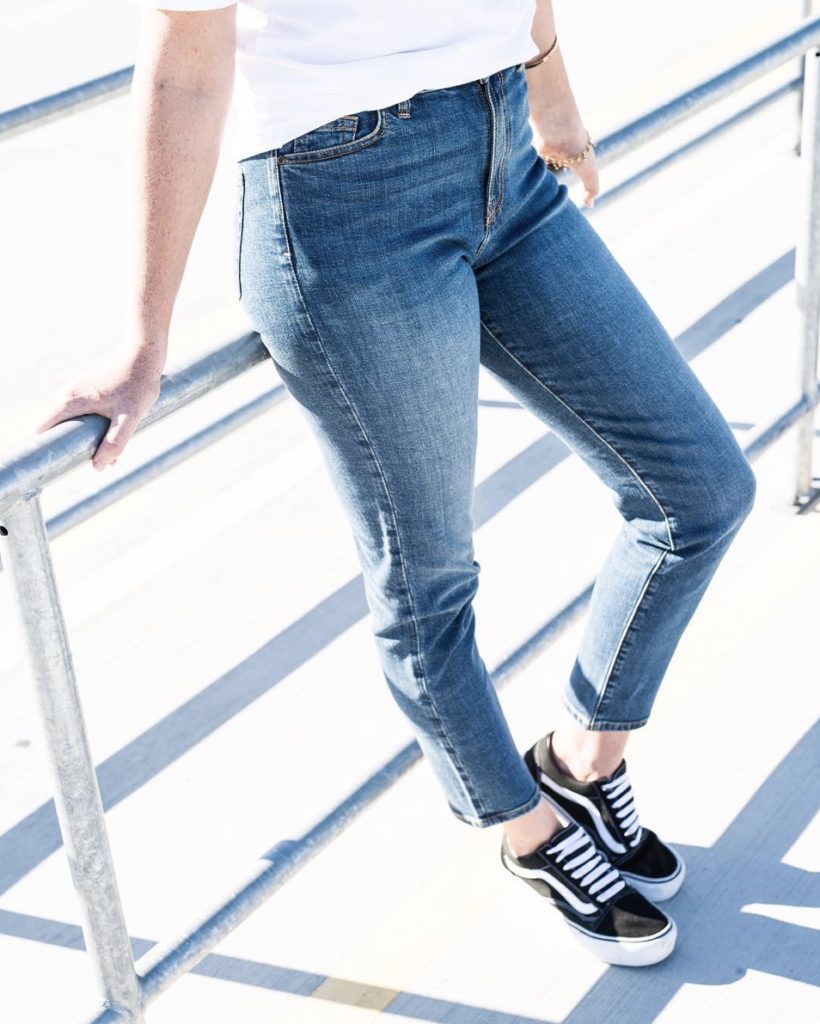If you haven’t heard of Outland Denim yet, you’re about to see a lot more of the brand on everyone, from famous faces to denim lovers of all demographics. Touted as “The World’s Most Humanitarian Denim Brand,” Outland Denim is one of the fastest growing companies in the world – especially now that Meghan Markle is a fan of the brand.
As a company that is only a few years old, Outland has received global acclaim and accolades for its incredible accomplishments in the world, and the lives the company is changing. Founded by Australia’s James Bartle, Outland has a mission to provide life-changing opportunities to survivors of human trafficking. By employing these survivors of the rampant human trafficking industry in Cambodia and offering a living wage, providing opportunities, and support beyond a career, Outland and its amazing jeans are making way for a new normal.
I sat down with Bartle in Toronto recently to hear more about how Outland is changing the world for the better.
View this post on Instagram
How did the idea for Outland Denim transpire? What came first; the desire to create a fashion brand, or the desire to make an impactful change?
It was definitely the desire to combat a problem that I was first made aware of through the Liam Neeson film Taken – human trafficking. Then, I travelled to Southeast Asia with a rescue agency and I witnessed for the first time what it looked like on the streets when I saw a little girl who was for sale. It was a really powerful experience to see and she was genuinely fearful and scared – that’s what really brought it home.
How did the idea for Outland transpire?
Seeing that, I left wanting to make a change and my wife and I started researching what we could do. I wasn’t in fashion; I just loved denim. It seemed like the easiest thing to do, but realized it wasn’t; denim was a hard thing to create when you take people with zero sewing skills and teach them how to make denim jeans as their first thing. You then are trying to sell into a space that is the most competitive in fashion. I never wanted to have a charity; I wanted to have a product that sells itself. It was about coming up with an economic solution to this massive global problem.

How did the business model evolve over time?
When we first went in, we went in with absolute pity; just feeling so compassionate and sorry for them. Then we had to sort of firm up and say, ‘if you’re going to be successful, you’re going to have to learn these skills. If you don’t want to learn them, then you can go elsewhere, but we can’t keep employing people who don’t.’ They then rose to the occasion. We spent six years developing and proving our model and proving that, if a women works within this model, she can get herself out of poverty. If she can get herself out of poverty, she is way less vulnerable to becoming a prostitute or getting into a situation where she is trafficked and sold for labour even – in a garment factory somewhere forced to work in subpar conditions.
In those six years, what was the biggest challenge?
Definitely funding it. I have another company, which is a metal fabrication business. I employed one person and I would work on it daily too and I was relatively newly married – it was just pressure. But once you start, you can’t stop, because now there are these people who have a dependency on this working. Once they learn the skills, they are not as dependent and can go and get jobs anywhere. We weren’t at that stage though and it felt pretty heavy. We would do all kinds of fundraisers – flipping sausages at the local supermarket and whatnot. I remember even counting gold coins my uncle gave me. But I would never change it because it really helps you decide whether you commit or not and for this to work, you have to be so committed and prepared to go down with the ship.

What was it like when you finally set up shop?
Well, we came in from the west and we thought, ‘ok, I am going to teach you to do this and you’re going to be great.’ But it doesn’t work like that. Actually, their culture has so many more strengths than you even realize, and until you embrace that and support them, nothing changes. We see that with NGOs across the world; there are so many in Cambodia where we work; NGOs come in and try to teach western ways of life and business. But making mental shifts in embracing their way of life has resulted in a way larger impact.
What has been the most rewarding part?
There have been a few. On a social level, going back and talking to the girls about what the opportunity really meant to them was so powerful. One of the girls said that since working for the company, she was able to buy her sister back from someone who owned her. Then when Meghan Markle wore the product, it was another profound moment for me. I had just landed in Cambodia and I woke up and my phone was just going crazy and what happened after that was a bit surreal. That morning, I felt this overwhelming emotion; sales just started to roll in like crazy, so did the media requests. I had to jump on a plane and fly right back to Australia to meet with media. It was the most incredible experience to say, ‘wow people care.’ Now, we have the biggest retailers in the world contacting us to see if they can carry our collections.
How did you deal with the “Meghan Effect” and the heightened demand?
Well, we only just got the model back in stock recently, but we are now selling out of sizes within days. Hopefully that continues. For all the good things, it’s also created problems; we were now really growing – and growing quickly. I needed to learn how to be wiser in learning how fast you can grow and controlling that growth and stabilizing that company as opposed to saying, ‘let’s keep growing.’ There is a lot of growth and we only have two production facilities, both in Cambodia (one is a cut and sewing and one is a finishing facility). We have a lot of room to grow out there; we can double in size from what we are now before we’ll need to go anywhere else. But we need to be smart and efficient about it; we’re not using robots or lasers to cut; everything is artisanal and cut by hand.
View this post on Instagram
Can you tell me a bit about the recently launched fall collection?
Like those previous, the fall collection is rooted in our love of simplicity; we want to be the basics in your wardrobe and to produce items that won’t necessarily fall out of fashion. We brought in new oat and olive colours this season, as well as a few different silhouettes, including overalls. The fall collection also draws on the 90s, with exposed button flies and cigarette style legs. We are also being a bit more fashion-forward too with things like a tuxedo stripe on our Olivia jeans and using new technologies in washing, so you’ll see things like whiskering on the front.
Featured Image: Instagram/@outlanddenim
Articles You May Be Interested In:
10 Affordable Brands That The Royal Family Loves
Beloved Toronto Denim Retailer Announces Massive New Location
How I Got My Job As Editor At Coveteur
How To Find The Right Pair Of Jeans For Your Body Type
7 Places To Get The Perfect Pair Of Jeans In Toronto
